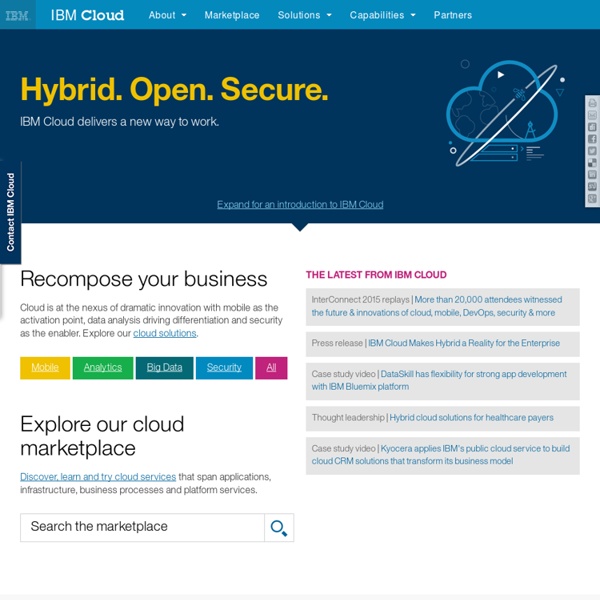



General Terms and Conditions - Numius Thank you for your interest in Deloitte. Unfortunately, the page you have selected cannot be found. If you received this error when you clicked on a URL from another web site, please inform the web site manager that the URL is incorrect or no longer valid. If you received this error when you click on a URL from our web site, please contact us to report the problem. Please include the URL of the web page that contained the hyperlink with this incorrect URL. If you entered the URL manually, please check the URL to ensure that the path is correct. You can return to the homepage, or search the site using the search bar. Amazon Web Services (AWS) - Cloud Computing Services
Business and Financial News Home » OpenStack Open Source Cloud Computing Software Getting Things Done Getting Things Done, in het algemeen afgekort tot GTD, is een actiegebaseerde managementmethode, en de titel van een boek door David Allen. GTD is gebaseerd op het principe dat een persoon door zijn taken vast te leggen zich over die taken geen zorgen hoeft te maken. Het moeten herinneren van alle taken maakt plaats voor het daadwerkelijk uitvoeren van de taken. De essentie van GTD[bewerken] De psychologie van GTD is gebaseerd op het eenvoudig opslaan, bijhouden en terugvinden van alle relevante informatie die nodig is voor de taken die je uit moet voeren. Allen stelt ook dat onze herinnering (memory system) tamelijk inefficiënt werkt en ons zelden helpt te herinneren wat te doen op de tijd en de plaats dat we het kúnnen doen. Een alomvattende beschrijving van GTD uit Allens boek “Ready for Anything”: Basisprincipes[bewerken] De basisprincipes van GTD zijn als volgt: Collect[bewerken] Process[bewerken] Verwerk de gegevens in de bucket en volg hierbij de volgende, strikte, werkwijze: Doe.